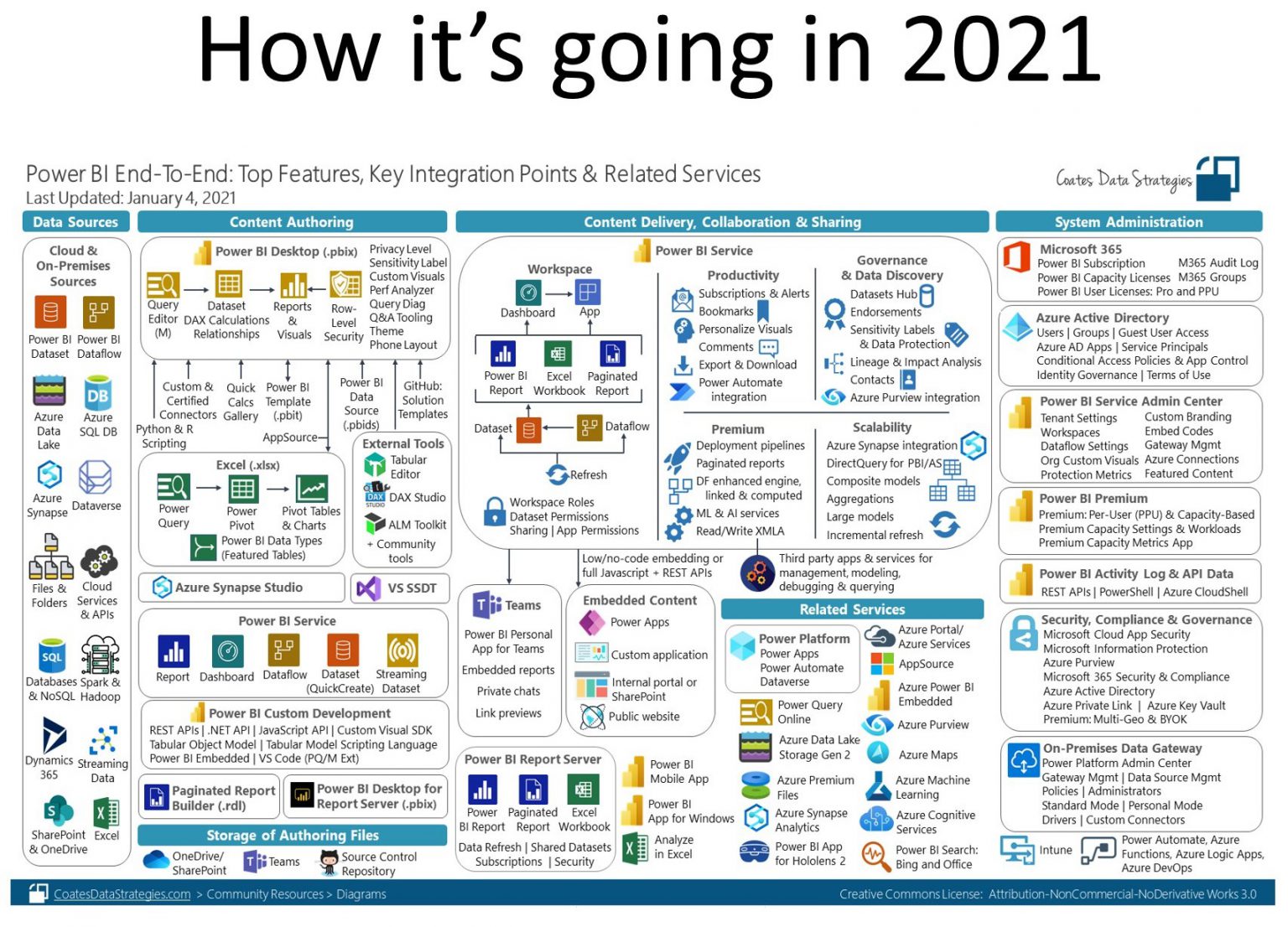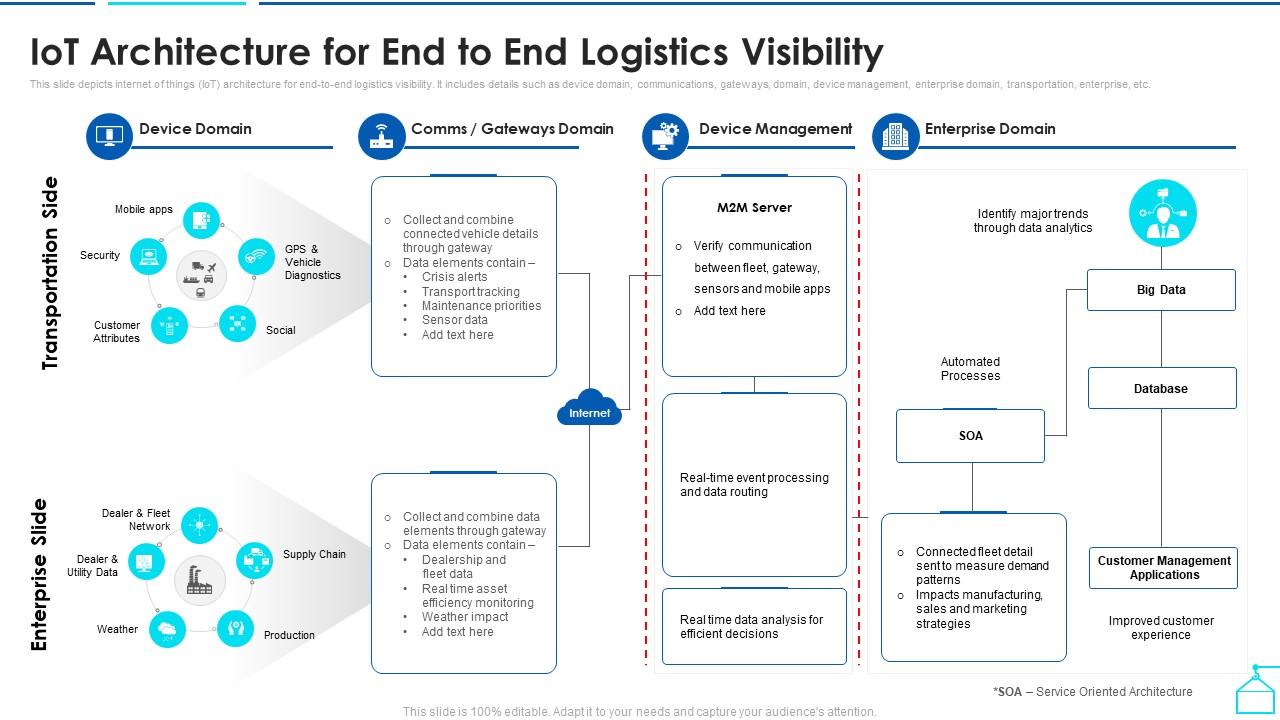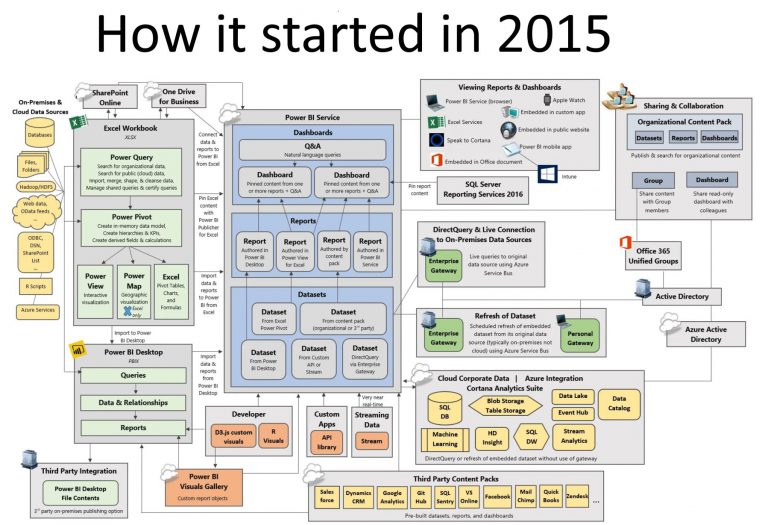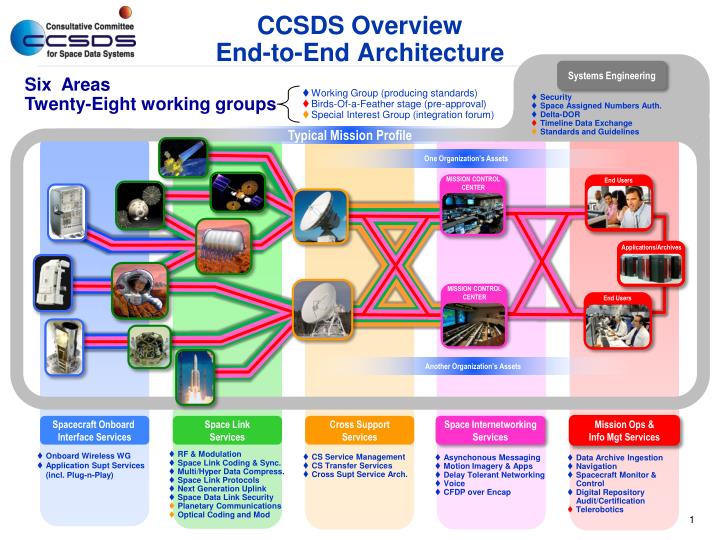What is End-to-End Architecture?
End-to-end architecture is a comprehensive approach to software development that encompasses the entire system, from data acquisition to delivery. It is a holistic view that emphasizes the integration and coordination of all components, including data sources, integration layers, processing engines, and delivery channels. The goal of end-to-end architecture is to streamline processes and improve efficiency, enabling organizations to achieve their business objectives more effectively.
In today’s fast-paced and complex business environment, end-to-end architecture has become increasingly important. With the proliferation of data and the need for real-time insights, organizations must have a robust and flexible architecture that can adapt to changing requirements and technologies. End-to-end architecture provides a framework for designing and implementing such a system, ensuring that all components work together seamlessly and efficiently.
By adopting end-to-end architecture, organizations can realize a range of benefits, including improved data quality, reduced errors, enhanced security, and increased scalability. For example, a well-designed end-to-end architecture can help organizations eliminate data silos, ensuring that all data is accessible and up-to-date. It can also reduce the risk of errors and inconsistencies by automating data processing and validation. Furthermore, end-to-end architecture can enhance security by implementing robust access controls and encryption throughout the system.
In summary, end-to-end architecture is a critical component of modern software development, providing a comprehensive and integrated approach to system design and implementation. By adopting end-to-end architecture, organizations can streamline their processes, improve their efficiency, and achieve their business objectives more effectively.

Key Components of End-to-End Architecture
End-to-end architecture is a complex system that consists of several critical components, each of which plays a vital role in ensuring seamless and efficient data flow. These components include data sources, integration layers, processing engines, and delivery channels.
Data sources are the starting point of any end-to-end architecture. These can be various systems, applications, or devices that generate or collect data. Data sources can be internal, such as enterprise applications, or external, such as social media platforms or IoT devices. Integration layers are responsible for connecting these data sources and enabling data exchange between them. They provide a unified interface for data access and ensure that data is consistent and reliable.
Processing engines are the heart of end-to-end architecture. They perform various functions, such as data transformation, validation, and enrichment. Processing engines can be rule-based, using predefined logic to process data, or machine learning-based, using algorithms to learn from data and make predictions. They can also be real-time or batch-processing, depending on the use case.
Delivery channels are the final component of end-to-end architecture. They are responsible for delivering processed data to the intended audience, which can be humans or machines. Delivery channels can be various systems, such as dashboards, reports, or APIs, and can be customized to meet specific business requirements.
These components work together to create a seamless and efficient system that ensures data integrity and consistency. For example, data sources can be integrated using integration layers, which can then feed data into processing engines for transformation and validation. Once processed, data can be delivered to delivery channels, such as dashboards or reports, for consumption.
By using end-to-end architecture, organizations can ensure that their data is accurate, consistent, and up-to-date, which can lead to better decision-making and improved business outcomes. However, designing an effective end-to-end architecture can be challenging, and organizations must consider various factors, such as data silos, legacy systems, and organizational resistance, to ensure a successful implementation.

Benefits of Implementing End-to-End Architecture
End-to-end architecture offers numerous benefits to organizations looking to streamline their processes and improve efficiency. By implementing an end-to-end architecture, organizations can enjoy improved data quality, reduced errors, enhanced security, and increased scalability.
One of the primary benefits of end-to-end architecture is improved data quality. By implementing an end-to-end architecture, organizations can ensure that their data is accurate, consistent, and up-to-date. This is because end-to-end architecture provides a unified view of data, enabling organizations to identify and correct errors and inconsistencies quickly. Improved data quality can lead to better decision-making and improved business outcomes.
Another benefit of end-to-end architecture is reduced errors. By automating data processing and validation, end-to-end architecture can help organizations eliminate manual errors and reduce the risk of data corruption. This can lead to cost savings, improved efficiency, and increased productivity.
End-to-end architecture also offers enhanced security. By implementing robust access controls and encryption throughout the system, organizations can ensure that their data is protected from unauthorized access and cyber threats. This can help organizations meet regulatory requirements and protect their reputation.
Finally, end-to-end architecture offers increased scalability. By implementing a flexible and modular architecture, organizations can easily add or remove components as needed, enabling them to scale their systems to meet changing business requirements. This can lead to cost savings, improved efficiency, and increased agility.
Real-world examples of the benefits of end-to-end architecture abound. For instance, a leading financial services company implemented an end-to-end architecture to streamline its data processing and improve data quality. By implementing an end-to-end architecture, the company was able to reduce its data processing time by 80%, improve data quality by 95%, and reduce errors by 99%. Similarly, a healthcare provider implemented an end-to-end architecture to improve patient care and reduce costs. By implementing an end-to-end architecture, the healthcare provider was able to reduce patient wait times, improve patient outcomes, and reduce costs by 20%.
Challenges in Designing End-to-End Architecture
While end-to-end architecture offers numerous benefits, designing and implementing such a system can be challenging. Some of the most common challenges include data silos, legacy systems, and organizational resistance.
Data silos are a common challenge in many organizations. Data silos occur when different departments or teams within an organization store and manage their data separately, leading to inconsistencies, errors, and inefficiencies. End-to-end architecture can help eliminate data silos by providing a unified view of data, but doing so requires significant effort and coordination across different teams and departments.
Legacy systems can also pose a challenge to end-to-end architecture. Many organizations rely on outdated systems and technologies that are incompatible with modern architectures. Upgrading or replacing these systems can be costly and time-consuming, but it is necessary to ensure the compatibility and integrity of the end-to-end architecture.
Organizational resistance is another common challenge. End-to-end architecture requires significant changes to an organization’s processes, systems, and culture. These changes can be met with resistance from employees, stakeholders, and other parties who are used to the existing systems and processes. Overcoming this resistance requires strong leadership, clear communication, and a well-planned change management strategy.
To overcome these challenges, organizations can take several steps. First, they can conduct a thorough assessment of their existing systems and processes to identify areas for improvement and potential challenges. This assessment should include a review of data sources, integration layers, processing engines, and delivery channels.
Second, organizations can engage with stakeholders and employees early and often to ensure buy-in and support for the end-to-end architecture. This can include town hall meetings, focus groups, and other forms of communication and collaboration.
Third, organizations can select the right technology and tools to support the end-to-end architecture. This includes selecting tools that are compatible with existing systems and processes, as well as tools that are scalable, secure, and flexible enough to meet changing business requirements.
Finally, organizations can establish clear policies and procedures for data management, security, and governance. This includes establishing data quality standards, access controls, and other measures to ensure the integrity and security of the end-to-end architecture.

How to Design an Effective End-to-End Architecture
Designing an effective end-to-end architecture requires careful planning, consideration, and execution. Here are the steps to follow to ensure a successful implementation:
Step 1: Define Business Requirements
The first step in designing an effective end-to-end architecture is to define the business requirements. This involves understanding the organization’s goals, objectives, and processes. It also includes identifying the data sources, integration layers, processing engines, and delivery channels required to support the business requirements.
Step 2: Select the Right Technology
Once the business requirements are defined, the next step is to select the right technology. This involves evaluating different technologies and tools based on their features, benefits, and limitations. It is essential to select technologies that are compatible with existing systems and processes, as well as those that are scalable, secure, and flexible enough to meet changing business requirements.
Step 3: Ensure Data Integrity
Ensuring data integrity is critical in end-to-end architecture. This involves implementing measures to ensure the accuracy, consistency, and completeness of data. It also includes establishing data quality standards, access controls, and other measures to ensure the security and governance of data.
Step 4: Design for Scalability
Designing for scalability is essential in end-to-end architecture. This involves selecting technologies and tools that can handle increasing volumes of data and traffic. It also includes designing the system to be flexible and adaptable to changing business requirements.
Step 5: Test and Validate
Testing and validating the end-to-end architecture is critical to ensure that it meets the business requirements, is scalable, and is secure. This involves conducting functional, performance, and security testing to identify and address any issues or bugs.
Step 6: Deploy and Monitor
Once the end-to-end architecture is tested and validated, it is time to deploy it. This involves configuring the system, setting up access controls, and deploying the software. It is essential to monitor the system continuously to ensure that it is performing as expected and to identify and address any issues or bugs.
Best Practices
Here are some best practices to follow when designing an effective end-to-end architecture:
- Involve stakeholders and employees early and often to ensure buy-in and support.
- Select technologies and tools that are compatible with existing systems and processes.
- Establish clear policies and procedures for data management, security, and governance.
- Test and validate the system thoroughly before deployment.
- Monitor the system continuously to ensure that it is performing as expected.

Popular End-to-End Architecture Frameworks and Tools
When it comes to designing and implementing end-to-end architecture, there are several frameworks and tools available to help organizations. Here are some of the most popular ones:
TOGAF
TOGAF (The Open Group Architecture Framework) is a high-level approach to design and governance of technology architecture. It provides a systematic and scalable method for developing and maintaining end-to-end architecture. TOGAF includes a set of guiding principles, a process model, and a set of architecture development methods. It is widely used in organizations of all sizes and industries.
Zachman
The Zachman Framework is a widely used enterprise architecture framework that provides a comprehensive view of an organization’s architecture. It includes six perspectives (data, function, network, people, time, and motivation) and six levels of abstraction (scope, context, conceptual, logical, physical, and detailed). The Zachman Framework is useful for organizations seeking to understand and manage the complexity of their end-to-end architecture.
Apache Kafka
Apache Kafka is an open-source platform for building real-time data pipelines and streaming applications. It is designed to handle high volumes of data and provides a unified platform for data integration, processing, and delivery. Kafka includes features such as publish-subscribe messaging, stream processing, and storage. It is widely used in organizations seeking to implement event-driven architectures and real-time data processing.
Microsoft Azure
Microsoft Azure is a cloud computing platform that provides a wide range of services for building, deploying, and managing applications and workloads. It includes features such as virtual machines, containers, serverless computing, and data services. Azure provides a flexible and scalable platform for implementing end-to-end architecture in the cloud.
Amazon Web Services (AWS)
Amazon Web Services (AWS) is a comprehensive cloud computing platform that provides a wide range of services for building, deploying, and managing applications and workloads. It includes features such as virtual machines, containers, serverless computing, and data services. AWS provides a flexible and scalable platform for implementing end-to-end architecture in the cloud.
Selecting the Right Framework or Tool
Selecting the right framework or tool for end-to-end architecture depends on several factors, including the organization’s goals, objectives, and processes, the complexity of the system, and the available resources. It is essential to evaluate different frameworks and tools based on their features, benefits, and limitations. It is also important to consider the organization’s existing systems and processes and ensure compatibility and integration.
In general, it is recommended to select a framework or tool that provides a comprehensive and systematic approach to end-to-end architecture. It should also be flexible and scalable enough to meet changing business requirements and support the organization’s growth and evolution.

Case Studies: Successful End-to-End Architecture Implementations
Implementing end-to-end architecture can be a complex and challenging process, but many organizations have successfully done so and reaped the benefits. Here are some success stories to inspire and guide you:
Case Study 1: A Global Manufacturing Company
A global manufacturing company implemented end-to-end architecture to streamline its supply chain and improve efficiency. By integrating data sources, processing engines, and delivery channels, the company was able to reduce lead times, improve order accuracy, and reduce costs. The key factors that contributed to the success of the implementation include strong leadership, clear communication, and a focus on data integrity.
Case Study 2: A Healthcare Provider
A healthcare provider implemented end-to-end architecture to improve patient care and reduce errors. By integrating data from various sources, such as electronic health records, medical devices, and clinical trials, the provider was able to provide more personalized and effective care. The key factors that contributed to the success of the implementation include a focus on data privacy and security, a user-centered design approach, and a culture of continuous improvement.
Case Study 3: A Financial Services Firm
A financial services firm implemented end-to-end architecture to improve risk management and regulatory compliance. By integrating data from various sources, such as market data, trading platforms, and regulatory reports, the firm was able to provide more accurate and timely risk assessments. The key factors that contributed to the success of the implementation include a focus on data quality and consistency, a robust testing and validation process, and a strong partnership with technology vendors.
Lessons Learned
These case studies highlight some key factors that contribute to the success of end-to-end architecture implementations. These factors include strong leadership, clear communication, a focus on data integrity, a user-centered design approach, a culture of continuous improvement, a focus on data privacy and security, and a robust testing and validation process. By incorporating these factors into your end-to-end architecture implementation, you can increase the chances of success and reap the benefits of a more efficient, effective, and streamlined system.

Future Trends and Developments in End-to-End Architecture
End-to-end architecture is constantly evolving, and new technologies and trends are emerging all the time. Here are some of the most exciting developments that organizations should be aware of:
Artificial Intelligence (AI) and Machine Learning (ML)
AI and ML are becoming increasingly important in end-to-end architecture, enabling organizations to automate processes, improve decision-making, and enhance customer experiences. By integrating AI and ML into end-to-end architecture, organizations can create more intelligent and responsive systems that can adapt to changing circumstances and learn from data.
Blockchain
Blockchain is a distributed ledger technology that enables secure and transparent transactions. By incorporating blockchain into end-to-end architecture, organizations can create more secure and trustworthy systems that are resistant to fraud and tampering. Blockchain can also enable greater interoperability and collaboration between different organizations and systems.
Internet of Things (IoT) and Edge Computing
IoT and edge computing are becoming increasingly important in end-to-end architecture, enabling organizations to collect and process data from a wide range of devices and sensors. By incorporating IoT and edge computing into end-to-end architecture, organizations can create more responsive and intelligent systems that can make real-time decisions based on data from the edge of the network.
Serverless Architecture
Serverless architecture is a cloud computing model that enables organizations to build and run applications without managing servers. By incorporating serverless architecture into end-to-end architecture, organizations can create more scalable and cost-effective systems that can automatically adjust to changing workloads and demands.
How to Stay Ahead of the Curve
To stay ahead of the curve in end-to-end architecture, organizations should focus on innovation, experimentation, and continuous learning. This means keeping up to date with the latest trends and technologies, testing and prototyping new solutions, and investing in training and development for staff. By adopting a culture of innovation and continuous improvement, organizations can stay ahead of the curve and take advantage of the latest developments in end-to-end architecture.

